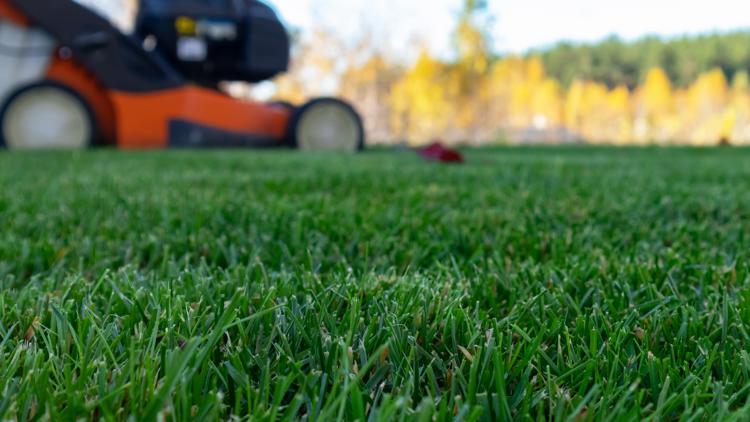ST PAUL, Minn. — With Minnesota summers being relatively short and residents determined to make every day count, sun and hot temps are the choice of many.
But if your lawn had a vote, it would opt for more seasons like the summer of 2024.
Moisture has been plentiful starting in late spring and continuing through the early part of summer, easing drought conditions that have taken a savage toll on residential turf for the past three years. We thought it would be a good time to check in with a lawn expert, and U of M Turfgrass Extension Educator Dr. Jon Trappe certainly qualifies.
Where are lawns at (in general) after the nice wet spring/early summer we had?
Dr. Trappe: Lawns this year have been getting a much-needed break compared to the previous three summers. The above-average and timely rains have helped lawns make up ground on some of the common weeds that have moved in during past weather stresses. Because of excessive heat, drought and even some winter stresses, lawns have taken a beating the last few years. Weeds like crabgrass, knotweed, oxalis, birdsfoot trefoil and creeping Charlie have filled in many of the voids (dirt areas) created by these stresses.
The weather has been great for lawns to recover from these stresses, and homeowners have probably noticed their lawns needing to be mowed a little more frequently because of it.
What height should we be mowing at with conditions right now to keep lawns healthy and help grass fend off weed intrusion?
We generally recommend using a higher setting that is at least 3-3.5 inches (in grass height). Mowing at higher a height will allow the lawn to be more resistant to weeds like crabgrass, be more drought tolerant and it will need to be mown less often when following the 1/3 rule. We recommend not mowing more than 1/3 of the grass's height in a single mowing event, so when maintained at a higher height you can go longer between mowings.
Should we be doing some watering now that the moisture cycle has slowed down, and warmer temps appear on the horizon?
Regardless if you have an irrigation system or not, we recommend you only water as needed. And if you are going to water, mimic mother nature and water deeply and infrequently. That means, water less often, but with higher amounts of water to allow moisture to soak deeper into the soil where you want to train roots to grow. You know when to water by just observing the grass. Early signs of drought stress will be when the leaves curl or roll up and the lawn will appear dull-green or grey. Footprints or wheel tracks left on the lawn several minutes after use are also great indications of wilting or early drought stress.
At that point, some water could be applied to prevent further stress. However, most lawns are capable of handling some drought stress, and can even enter dormancy to avoid drought conditions. If you choose to not water and let your lawn go dormant, we recommend not mowing, fertilizing, or using the lawn for recreation to reduce stress.
With temps a touch more mild this summer, is overseeding OK now or should we wait until fall?
Overseeding is a great way of improving your lawn. There are two times of the year that are great for doing this - early fall and early winter. Early fall, generally around the first two weeks of September, is a GREAT time to overseed. These seedlings may need to be watered as they germinate and emerge.
Dormant seeding, which takes place in early November, does not need to be watered and is a strategy of taking advantage of winter rain and snow to work the seed into the soil (so it will emerge) next spring.
What is the most important thing to maintain the improved quality of turf?
Having a healthy and functional lawn begins in the fall. It is the best time of year for fertilizing, controlling broadleaf weeds, aerating, and overseeding. Check out the University of Minnesota Extension's Lawn Care Calendar for more information on best lawn care practices and when to do them.



